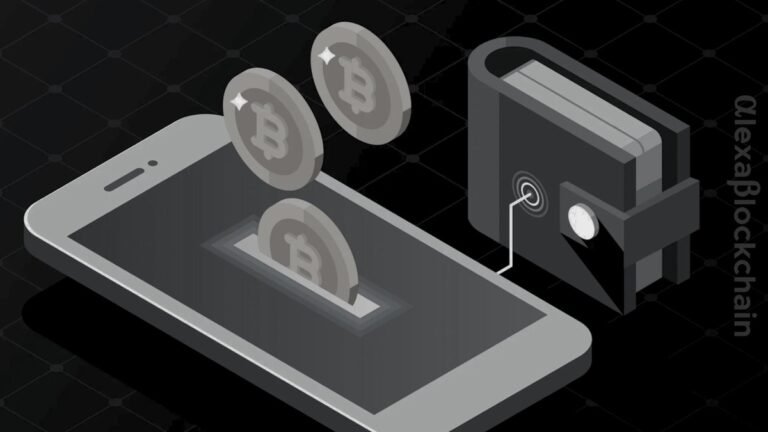In the ever-evolving landscape of finance, the emergence of Web3 technology presents a paradigm shift towards decentralization. At the heart of this transformation are Web3 wallets, the gateway to a new era of financial empowerment and autonomy. In this article, we delve into the significance of Web3 wallets and their pivotal role in shaping the future of finance.
Understanding Web3 Technology
Before diving into the intricacies of Web3 wallets, it’s essential to grasp the fundamentals of Web3 technology itself. Unlike its predecessors, Web3 represents a decentralized web where users have full control over their data and transactions. Powered by blockchain technology, Web3 aims to eliminate intermediaries, foster trustless interactions, and promote transparency across digital ecosystems.
What are Web3 Wallets?
Web3 wallets serve as the cornerstone of this decentralized infrastructure, enabling users to securely store, manage, and transact with digital assets. Unlike traditional finance, where centralized entities govern access to funds, Web3 wallets empower individuals with complete ownership and control over their assets. By leveraging cryptographic principles, these wallets ensure that users can interact with blockchain networks seamlessly while maintaining privacy and security.
Key Features and Functionality
One of the defining features of Web3 wallets like MetaMask, Coinbase, and Exodus is their interoperability across different blockchain networks. Whether it’s Bitcoin, Ethereum, or any other compatible blockchain, users can manage multiple assets within a single wallet interface. This interoperability fosters a unified user experience and eliminates the need for multiple wallet solutions.
However, the level of interoperability can vary between different wallets and blockchain networks. Some wallets may only support a subset of blockchains, while others aim to provide broad multi-chain support. The development of cross-chain technologies and standards continues to evolve, enhancing interoperability across the blockchain ecosystem.
Moreover, Web3 wallets prioritize security through advanced encryption techniques and secure key management systems. Private keys, which act as digital signatures for transactions, remain in the sole possession of the user, mitigating the risk of unauthorized access or tampering. Additionally, many Web3 wallets integrate multi-factor authentication and biometric security measures to further enhance protection against potential threats.
Empowering Financial Inclusion
Beyond security and functionality, Web3 wallets hold immense potential for advancing financial inclusion on a global scale. In regions where traditional banking infrastructure is lacking or inaccessible, web3 wallets provide a gateway to bankless financial services. With just an internet connection, individuals can participate in a wide range of financial activities, from remittances and micropayments to accessing decentralized finance (DeFi) protocols.
Moreover, Web3 wallets democratize access to financial services by removing barriers to entry and empowering individuals to become their own custodians of wealth. This shift towards self-sovereignty aligns with the ethos of decentralization, where financial autonomy is not dictated by geographical location or socio-economic status.
Privacy and Transparency
Another crucial aspect of Web3 wallets is their emphasis on privacy and transparency. Unlike traditional banking systems where transactions are often obscured by layers of intermediaries, blockchain technology enables transparent and immutable record-keeping.
Every transaction conducted through a Web3 wallet is recorded on the blockchain, providing a transparent audit trail that can be accessed by anyone with an internet connection. This transparency not only enhances accountability but also fosters trust among users, as they can verify the integrity of transactions in real-time.
At the same time, Web3 wallets prioritize privacy by allowing users to control the dissemination of their personal information.
While transaction data is publicly visible on the blockchain, the identities of wallet holders remain pseudonymous. This pseudonymity preserves user privacy without compromising the integrity of the underlying blockchain network.
Additionally, advancements in privacy-focused technologies such as zero-knowledge proofs and cryptographic techniques further bolster the privacy features of Web3 wallets, ensuring that sensitive financial information remains secure and confidential.
Cross-Border Accessibility
Web3 wallets also facilitate seamless cross-border transactions. Traditional financial systems often impose limitations and high fees on international transfers, especially for individuals in underserved regions. However, with Web3 wallets, users can seamlessly send and receive funds across borders without the need for intermediaries or exorbitant fees.
This level of accessibility not only empowers individuals in developing countries to participate in the global economy but also facilitates remittances, e-commerce, and peer-to-peer transactions on a global scale. As a result, Web3 wallets play a pivotal role in fostering financial inclusivity and reducing the disparities created by traditional banking systems.
Challenges and Opportunities
Despite their transformative potential, Web3 wallets also face certain challenges, including scalability, usability, and regulatory compliance. Scalability issues within blockchain networks can lead to slow transaction speeds and high fees, hindering the seamless user experience promised by Web3 technology. Additionally, the complexity of cryptographic key management may deter mainstream adoption, necessitating user-friendly solutions and educational resources.
However, these challenges also present opportunities for innovation and improvement within the Web3 ecosystem. Projects are actively working on scaling solutions such as layer 2 protocols and interoperability bridges to enhance the performance of blockchain networks. Likewise, user-centric design principles and educational initiatives can bridge the gap between technical complexity and mainstream adoption, making Web3 wallets more accessible to the general public.
Overall, Web3 wallets represent a fundamental pillar of the decentralized finance. By combining security, interoperability, and financial inclusion, these wallets empower individuals with unprecedented control over their digital assets. As we continue to navigate the evolving landscape of Web3 technology, the role of Web3 wallets will remain pivotal in shaping a more inclusive, transparent, and equitable financial system for generations to come.
Read Also: Cryptocurrency: what makes it so popular?



